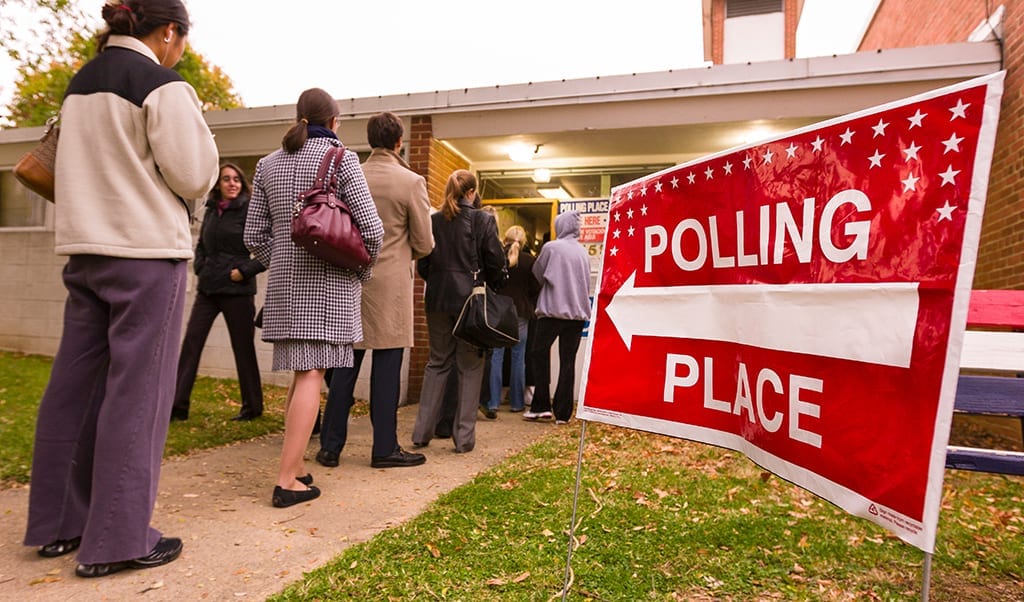 A polarized country with a first-term president. A contentious battle for a Supreme Court seat, still fresh in many Americans’ minds. An increasing number of women running for office and working to get out the vote. These are just some of the factors that affected the midterm elections, which saw record voter turnout as Democrats regained a majority of the U.S. House of Representatives and Republicans expanded their hold in the U.S. Senate.
A polarized country with a first-term president. A contentious battle for a Supreme Court seat, still fresh in many Americans’ minds. An increasing number of women running for office and working to get out the vote. These are just some of the factors that affected the midterm elections, which saw record voter turnout as Democrats regained a majority of the U.S. House of Representatives and Republicans expanded their hold in the U.S. Senate.
At press time, about two dozen Congressional races were still too close to call, but Shawn McBurney, the Society of American Florists’ senior director of government relations, said there are already some takeaways for the floral industry.
Here’s a snapshot of how the elections could affect Congress and the industry:
House of Representatives
Democrats won the House of Representatives for the first time in eight years — results that will “completely upend the relationship between Congress and the Administration,” McBurney said, noting that Democrats will gain the power to control the House calendar, conduct investigations, subpoena executive branch officials and schedule hearings.
“The midterms were in large part a referendum on Trump,” he said. “Now that Democrats control the House, they will attempt to stymie his agenda at every turn.”
One potential challenge for Democrats? “Their narrow margin of victory,” which could become especially vexing as Democrats from the party’s progressive and center-left factions look toward the next presidential campaign and try to shape their platform.
Senate
Republicans widened their majority in the Senate by at least three seats (pending final results at press time). That means Majority Leader Mitch McConnel will extend his service into the 116th Congress; Sen. Charles Schumer will remain as top Democrat.
With a margin of 54-46 in the GOP’s favor, Democrats will continue to exert leverage in shaping policy, due to the Republicans’ lack of the 60 votes required by Senate rules to pass legislation.
“Expect the Senate to be the center for policy negotiations between a Democratic House and a Republican White House,” McBurney said.
Key issues McBurney will be watching that could affect the floral industry include:
Health Care
After years of Republicans vowing the repeal the Affordable Care Act (ACA) and then failing to do so when they tried, “Democrats will not only seek to protect it, they may look to expand it,” McBurney said. “In addition, President Trump has issued several executive orders that Democrats perceive as undermining the ACA. It is possible they may attempt to block those actions with their House majority.”
The Environment
House Democrats may pursue environmental legislation as well. “Democrats have supported imposing a carbon tax for years but have not been able to move it because the Republican majority, especially in the House, is opposed to it,” McBurney said. “Now that they control the House, they may pursue it and work with Democrats in the Senate to develop bipartisan support in that chamber to pass it. “
Labor
Labor issues may become a high priority for the Democratic House. “Democrats and organized labor have been frustrated ever since a Democratic-dominated Congress and President Obama failed to enact the Employee Free Choice Act (EFCA), also known as Card Check,” McBurney said. “President Obama imposed many parts of EFCA through executive actions, but many have been undone by court rulings and the Trump Administration. And as far as immigration goes, it will still remain contentious.”
Look for extended coverage of industry issues and midterm results in this week’s Week in Review.
Drew Gruenburg is the chief operating officer of the Society of American Florists.



